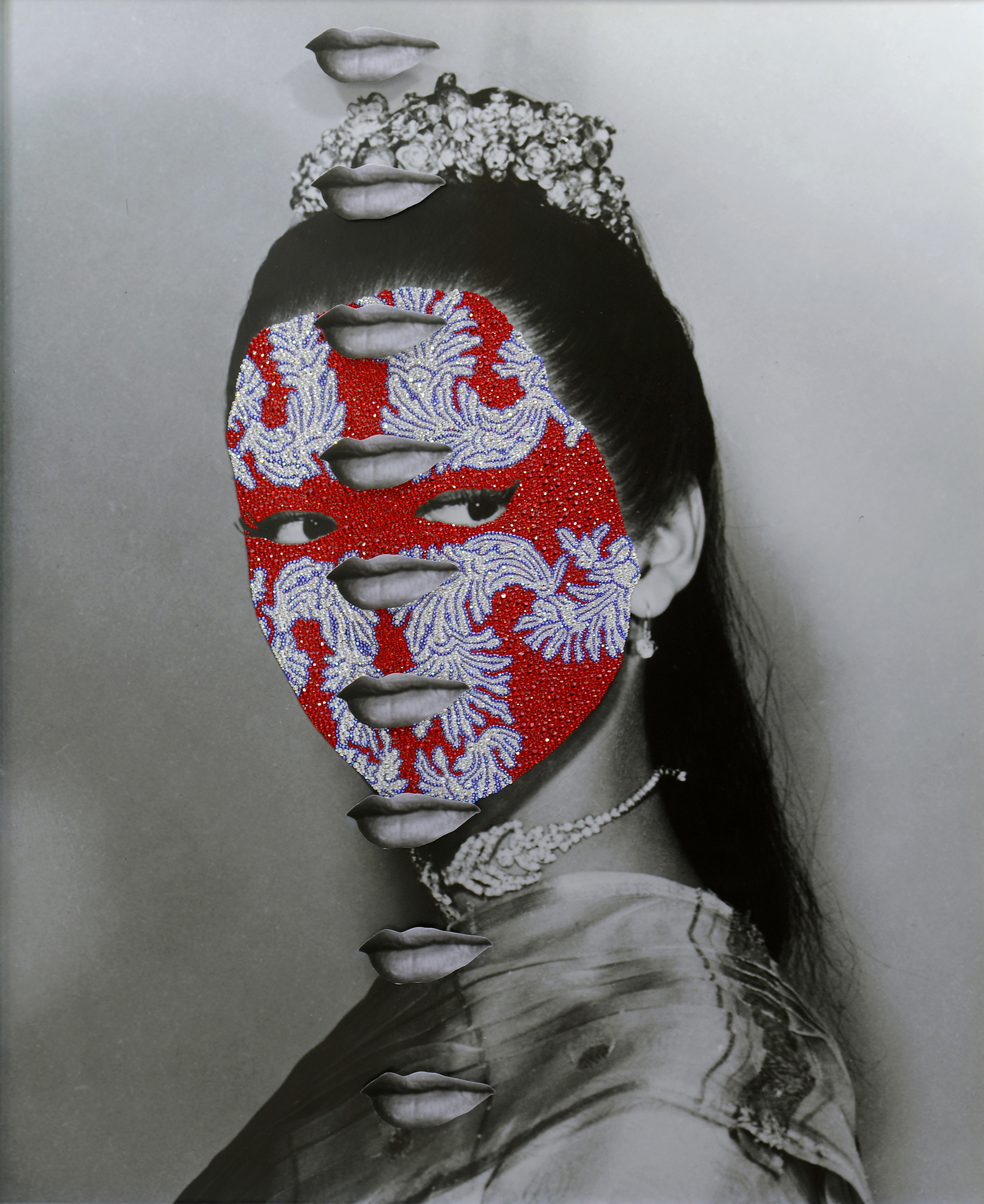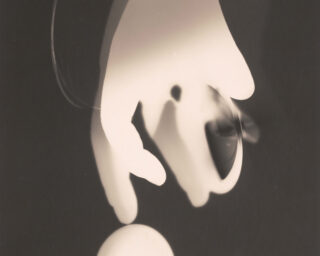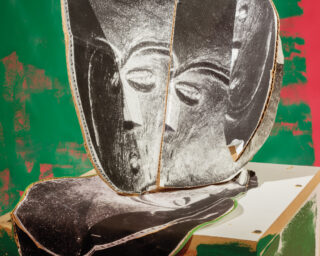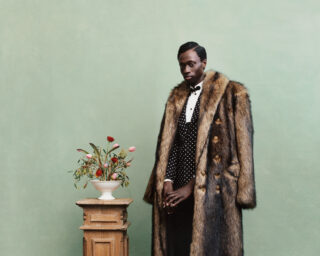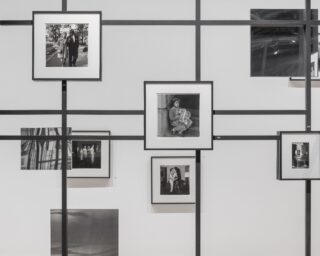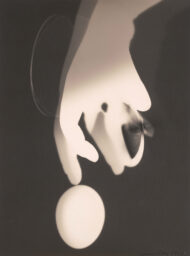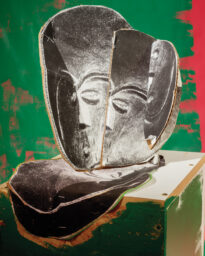Nathan Beard, We Kiss In A Shadow, 2020
The emotional resonance of a found photograph has long fascinated Nathan Beard. The Thai Australian artist, who is based in Boorloo (Perth), looks to existing imagery to explore the threads of personal histories, as well as the wider context of Thai culture, specifically the flattening and condensing that occurs when it is consumed through a Western lens.
Beard’s interest in reclaiming old photographs was piqued in 2013 when he discovered several long-forgotten family albums in his mother’s home in Nakhon Nayok, Thailand. The building had sat abandoned for more than twenty years, and the artist embarked on reopening the house while on a residency at Speedy Grandma gallery in Bangkok. The albums—which feature photographs of his mother, aunt, and other relatives he had never met or can barely remember—serve as a visual record of his fragmented childhood memories and stories passed on through the family. “It was a rich source material to work with,” he says, “not only to connect to my mom and her family, but to explore tenuous ideas of identity and how I position myself culturally as someone of Thai and white Australian heritage.”

Beard looked to the excessive adornment found in many elements of Thai culture as a way to recontextualize these images. He saw similarities between the precious mosaics and antiquities found in Buddhist temples and the rhinestones in his mother’s domestic shrines. The obsession with bedazzling extended to Bangkok’s markets, where everything from T-shirts to phone covers were embellished. “I began decorating reproductions of these photographs with Swarovski crystals to give them a material presence, one that is venerated, but also alludes to the pop culture of contemporary Thailand,” the artist explains. This process is evident in series such as and Siamese Smize (2018) and Ad Matres (2014–17), in which some photographs feature gems applied to faces as shimmering tears, not simply abstract motifs, a treatment that was reserved for relatives Beard had met in person, creating a melancholic connection to a fractured family tree.
The artist further develops this in his latest body of work, A Puzzlement (2022), which was recently on view at Perth Institute of Contemporary Art (PICA) and will travel to the 4A Centre for Contemporary Asian Art in Sydney later this year. The series takes the theatrical and cinematic productions of The King and I as its starting point. The Orientalist fantasy of an English governess falling in love with a Thai monarch was introduced in the 1950s in the United States and Europe to great acclaim, but the film was banned in Thailand due to its misrepresentation of the king.
“Watching The King and I was the first time I vividly recall my mom’s culture being reflected back to me through a Western lens,” says Beard. In A Puzzlement, headshots, film stills, and ethnographic images are blown up to more than six feet square, and are once again laboriously embellished. “Painstakingly applying the crystals is almost a meditative act, where I am obliterating the subject entirely by creating a shimmering void,” he adds. “I’m ostensibly creating a crystal mask, which not only elevates the image, but points to the facade of cultural identity and authenticity. It is interesting to try and complicate the legacy of all of these objects and images.”


These carefully applied ombré layers feature seven Swarovski tones, all with the term Siam in their names (such as “Light Siam Shimmer” and “Siam Nightfall”). The outdated and exoticizing terminology points to the contexts of the images the crystals adorn, such as a film still of Yul Brynner, who played King Mongkut in both the film and stage adaptations of The King and I in the 1950s, and a photograph of Prince Chulalongkorn taken by John Thomson, who in 1865 became the first Western photographer permitted to take portraits of the Thai royal family. Beard also includes a portrait of Arthur Francis George Kerr from 1939, which he came across while conducting research at Kew Gardens in London. Kerr is known as the “father of Thai botany” in Eurocentric circles, and his study and propagation led to several plant species being named after him.
In bringing together these images, Beard presents the many contradictions and conflicts that arise from ideas of Thai identity, even those that are state-induced. “King Mongkut introduced policies of Westernization to strategically avoid colonization,” says Beard, “whereas Kerr built this huge archive of native Thai plant species, including notebooks and amateur photography, which are stored in Kew.”

This cultural cross-pollination, and the huge part that photography has played in it, informs other aspects of Beard’s practice. In addition to his work with found photographs, he shoots original imagery to document his regular trips to Thailand, including photographs of the abandoned family house and the surrounding countryside, where he shot intimate portraits of his mother in the series Departures (2016), and, more recently, a sensitive record of her funeral following her unexpected death in 2019. The ensuing series, Tender Ruin (2021–22), helped the artist begin processing his grief.
“These images are my impression of Thailand,” he says. “I only seem to have a drive to document when I’m there, to supplement the archive I have inherited.” The artist often presents his photos as assemblages—referencing not only family albums, but also the multiple tabs and windows on a computer screen—as if he is trying to sort and make sense of his own collected memories.
In another experimental approach, Beard uses images of Thai objects on display in museums around the world as source material to create 3D-printed sculptures, some of which are featured in A Puzzlement. The result is a deft comment on the distorted way cultural, and often sacred, objects are presented in ethnographic and museum contexts.
Similarly, Beard’s White Gilt (2019–20) series uses popular Thai motifs of wai hand gestures, nail bars, and orchids to consider ideas of cultural authenticity and exoticism. His beautiful, yet slightly sinister, images of manicured hands and floral stems are shown among shots of his parents’ wedding, postcards, travel promotions, and Buddhist statues. Such assortments speak to the mundanity of tropes used to represent Thai identity, but also the implicit violence of homogenizing and neatly packaging an entire culture. “Those original family photographs unlocked all of these associations for me,” says Beard. “The idea of cultural identity is contingent on so many different and disparate things.”

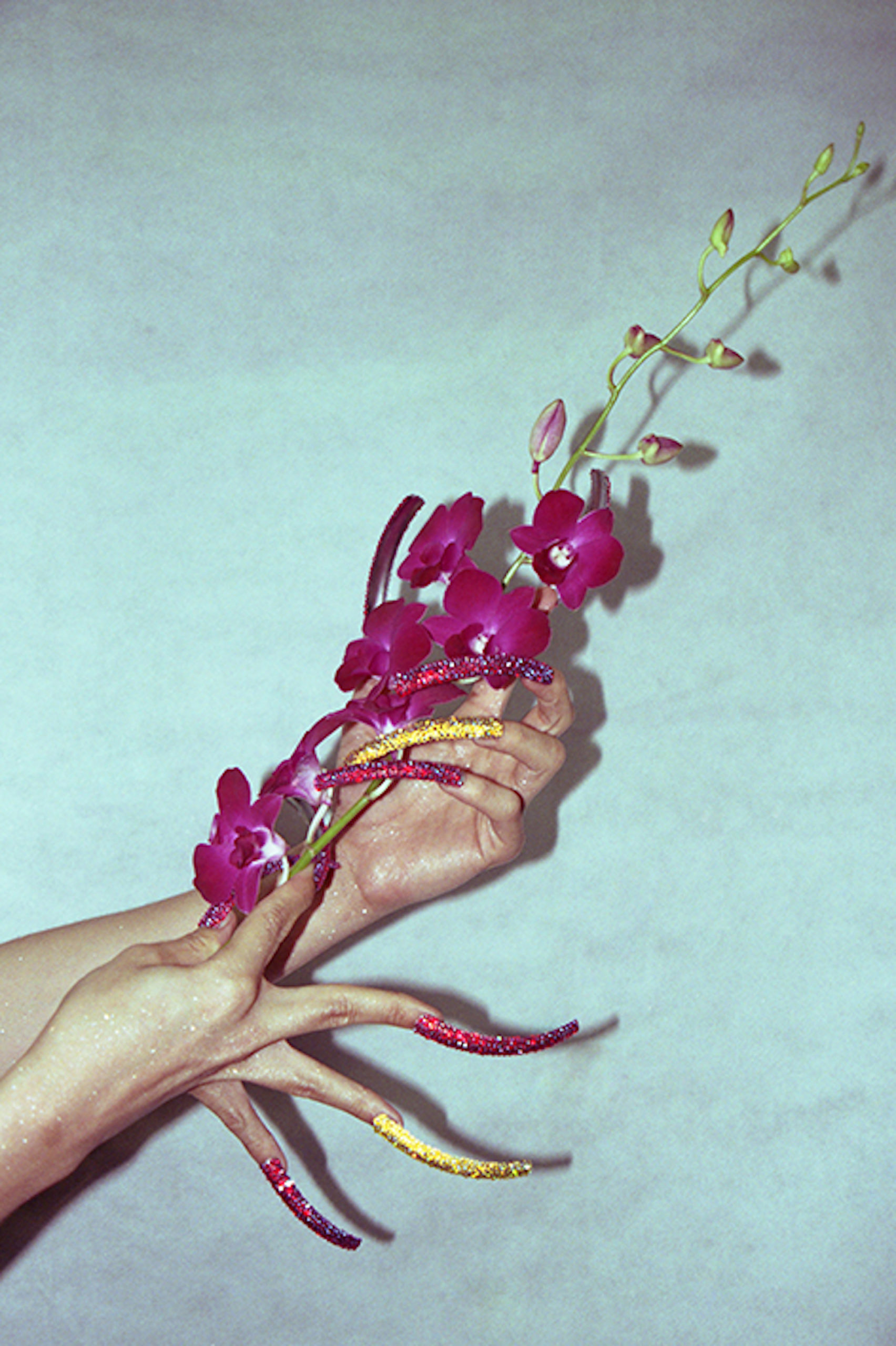
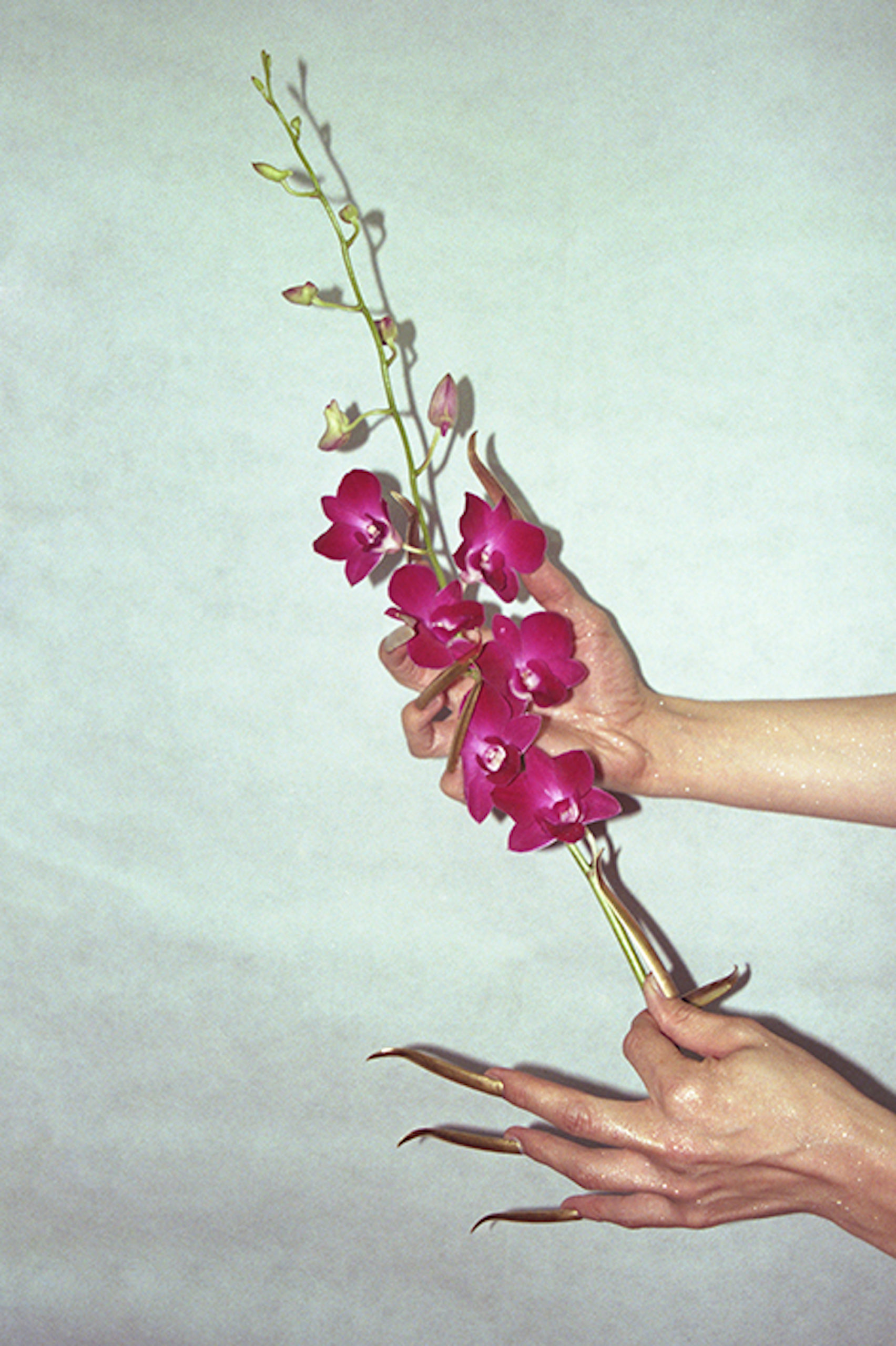



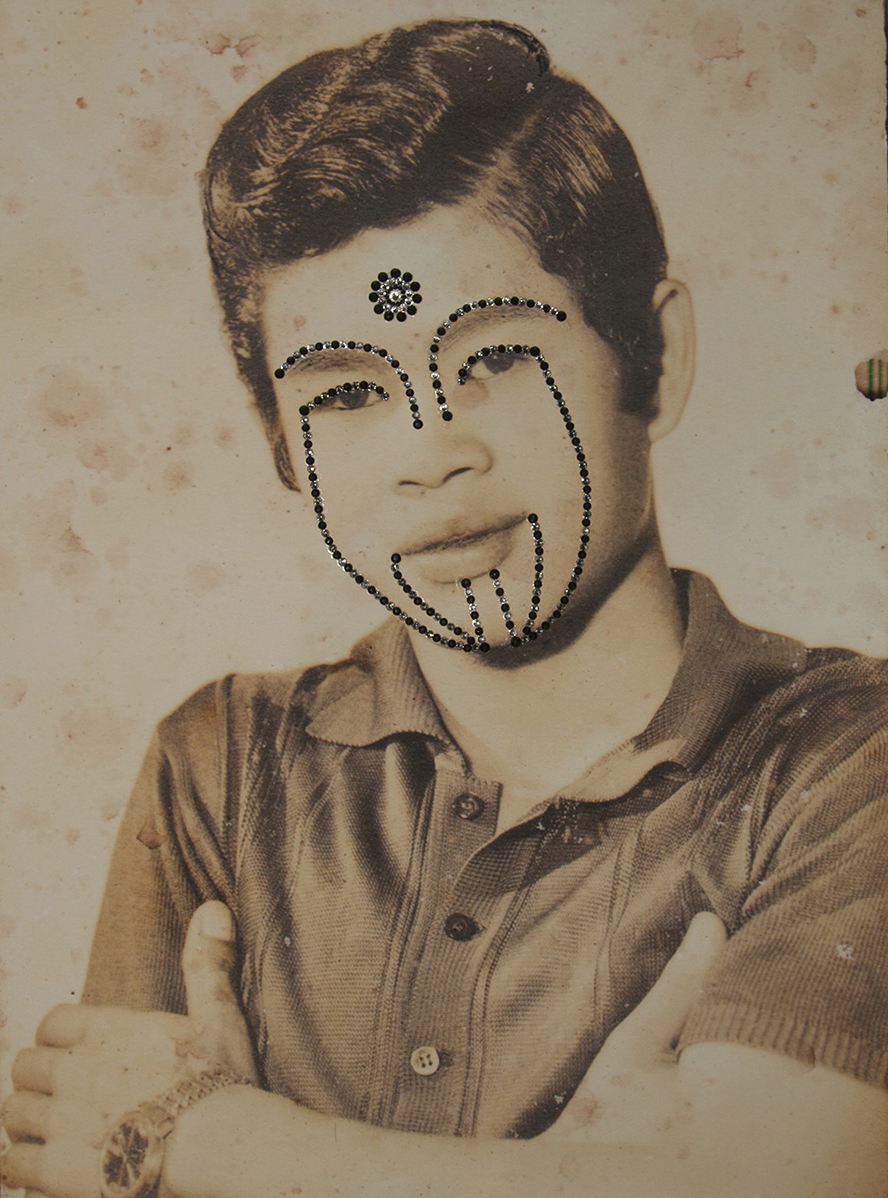

All photographs courtesy the artist
Read more from our series “Introducing,” which highlights exciting new voices in photography.










